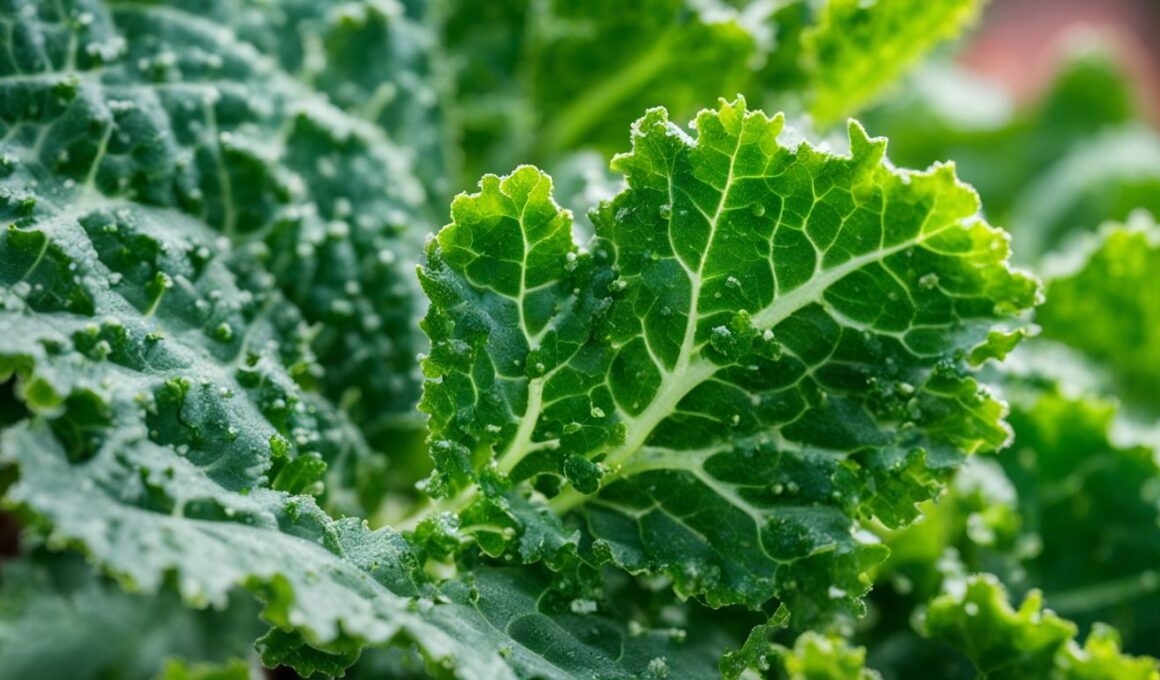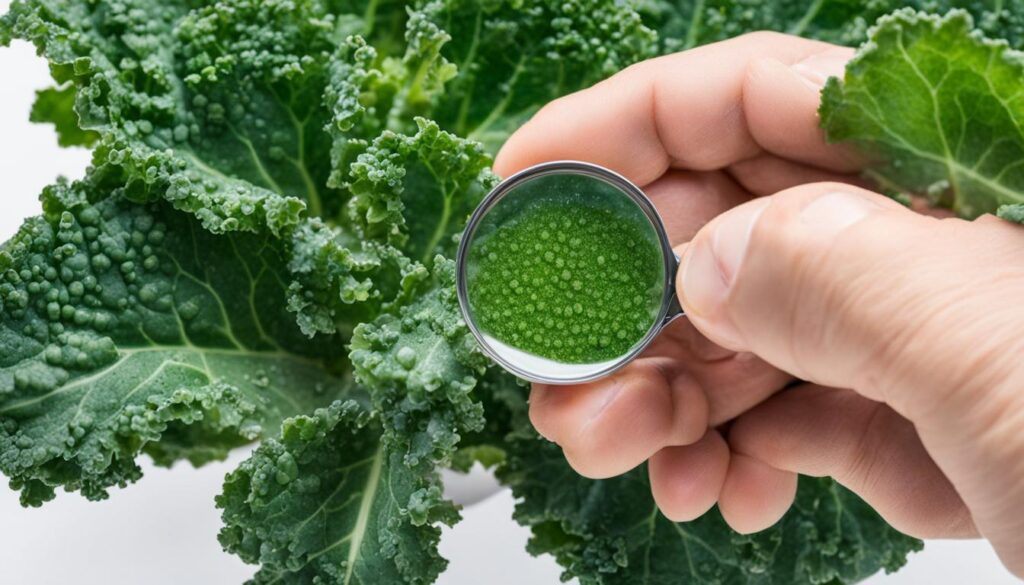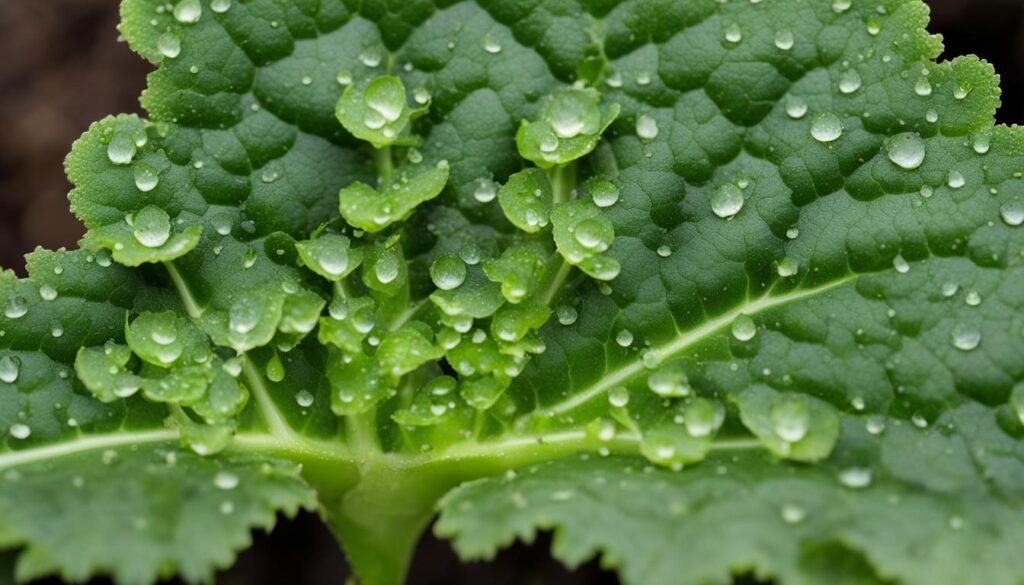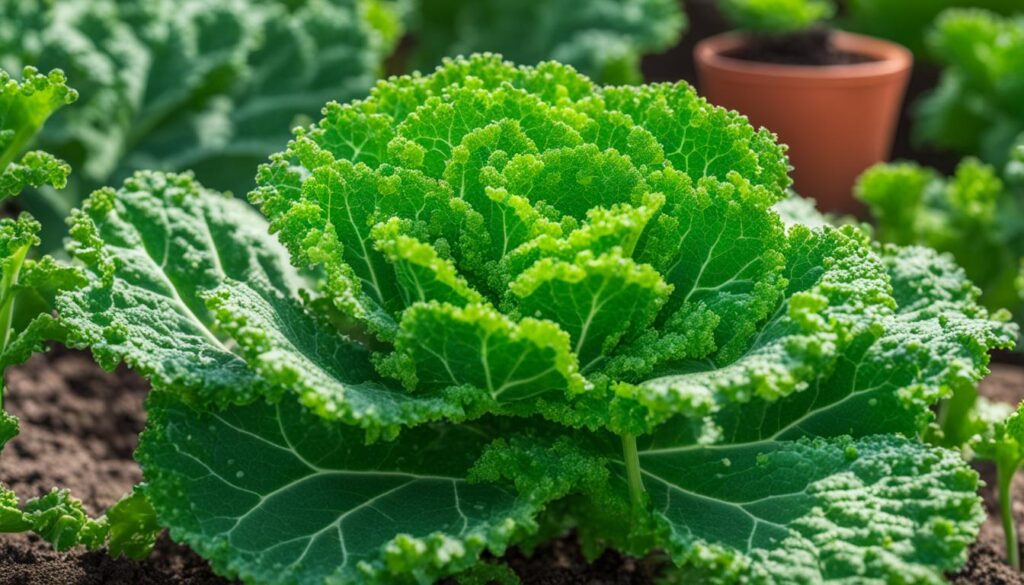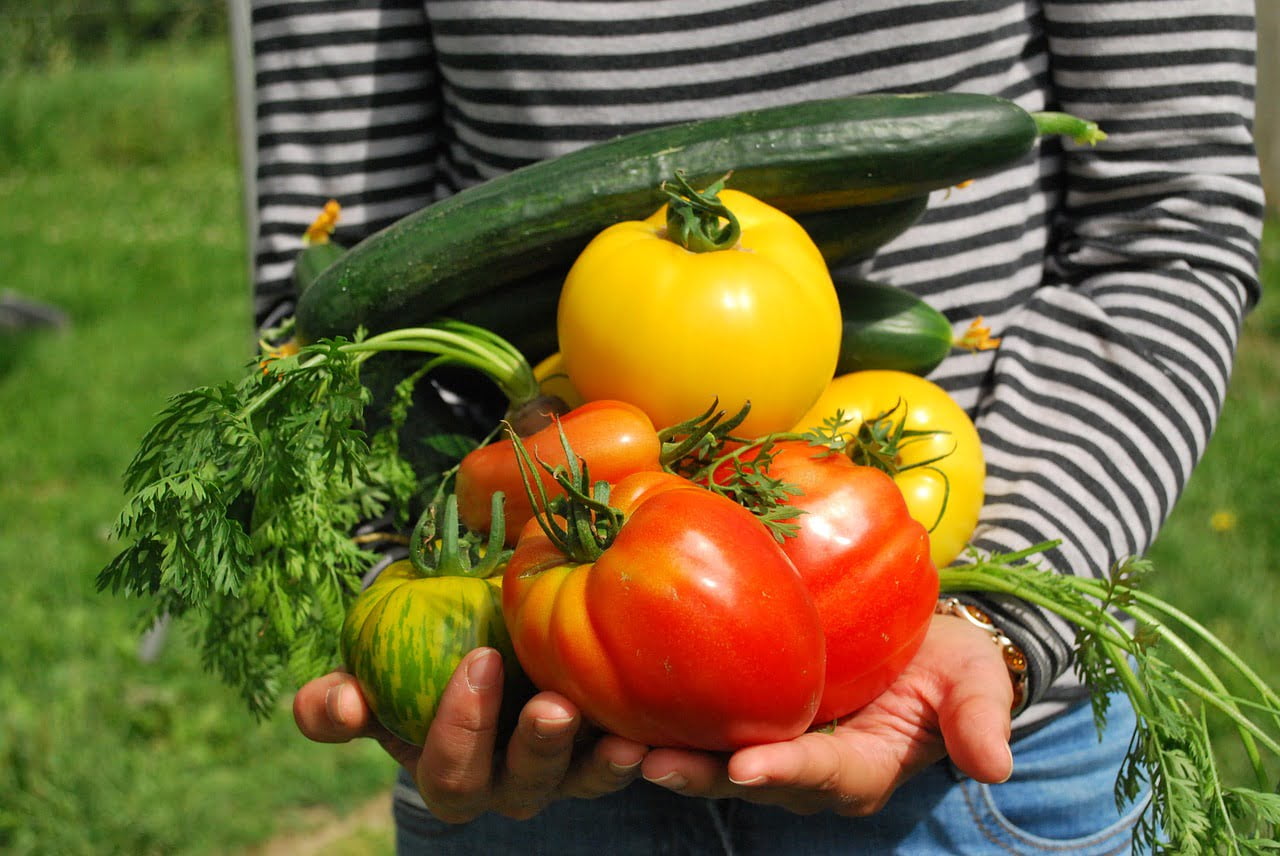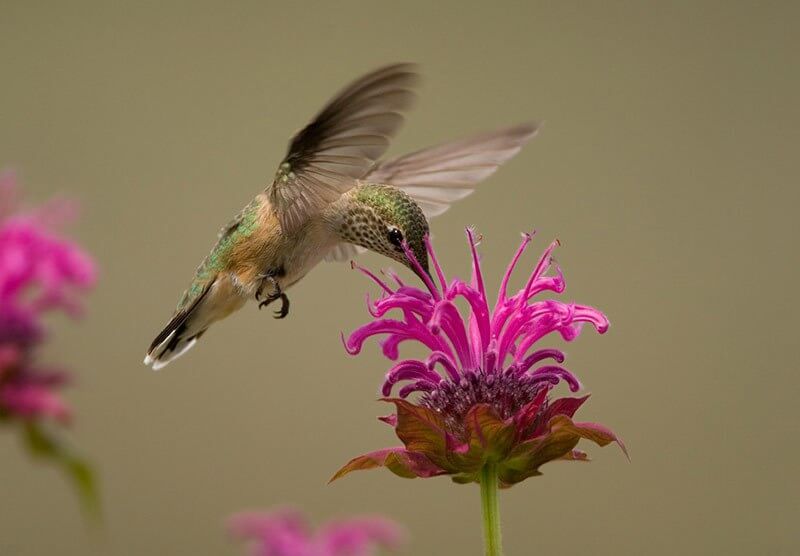Kale, a beloved leafy green, is unfortunately prone to infestation by aphids, sap-sucking insects that can damage the plants. Protecting your kale from aphids is essential to ensure healthy, aphid-free greens for your recipes. In this article, we will explore effective methods to remove aphids from kale and safeguard your plants.
Post Summary
- Removing aphids from kale involves swishing the greens in cold water with a pinch of salt or a drop of soap.
- Proper washing, soaking, and inspection are necessary steps to eliminate aphids and ensure aphid-free kale.
- Companion planting and integrated pest management (IPM) can help prevent aphid infestations and protect your kale.
- Regular monitoring and timely intervention are crucial in maintaining a healthy garden ecosystem.
- Implementing organic pest management practices and avoiding stronger sprays can preserve beneficial insects.
Aphids on Kale: A Surprising Encounter
While cleaning and prepping a bunch of kale, the writer had a surprising encounter with aphids. This unexpected presence of aphids on kale was a cause for concern, as the writer was unaware of this common occurrence. To safely remove aphids from kale, a thorough cleaning process is necessary.
The first step in removing aphids is to spray the kale leaves with water, ensuring that the water pressure is gentle enough not to damage the leaves. This will help dislodge the aphids from the surface. After spraying, the kale should be soaked in a solution of salt, vinegar, or dish soap. This solution helps to kill any remaining aphids and make it easier to remove them.
Once the kale has been soaked, it should be picked through carefully to ensure that all aphids are removed. The leaves should be inspected both visually and by touch to make sure no aphids are hiding. Any leaves with visible aphids should be discarded. Finally, the kale should be drained, dried, and stored properly to prevent any new infestations.
Understanding Cabbage Aphid Control
Cabbage aphids are a specific type of aphid that can cause damage to crops like kale, broccoli, cabbage, and Brussels sprouts. These plant pests have a unique reproductive cycle, with females producing clones and males appearing later in the season. While cabbage aphids have natural predators like ladybeetle larvae, their bitter mustard compounds tend to deter these beneficial insects. To effectively control cabbage aphids on kale, it is important to understand their behavior and implement appropriate measures.
One of the first steps in cabbage aphid control is removing and disposing of infested leaves. This helps to prevent the spread of aphids to new growth. Follow-up treatment options can include the use of botanical sprays, insecticidal soap, or horticultural oil. These products can help control aphid populations and reduce damage to kale plants. It is important to carefully follow the instructions on the product labels and avoid using stronger sprays that may harm beneficial insects.
Comparison of Cabbage Aphid Control Methods
| Control Method | Effectiveness | Benefits |
|---|---|---|
| Botanical sprays | High | Low toxicity, organic option |
| Insecticidal soap | Medium | Effective against soft-bodied insects |
| Horticultural oil | Medium | Controls aphids by suffocating pests |
“Using botanical sprays or targeted insecticides can be effective in controlling cabbage aphids on kale.”
Implementing a combination of cabbage aphid control methods can help protect kale plants and ensure a healthy harvest. Regular monitoring and timely intervention are key to successful aphid control. By taking proactive measures, you can prevent infestations and maintain the health and quality of your kale crop.
Sprays for Cabbage Aphid Control
When it comes to controlling cabbage aphids, various sprays have been tested for their effectiveness. One natural option is mint tea with a few drops of dishwashing soap. Mint tea acts as a repellent, deterring aphids from infesting the plants. Another potential pesticide is lantana extracts, which have shown potency against cabbage aphids. Spritzing plants with these repellent sprays can be an effective method of cabbage aphid control.
However, it is important to exercise caution when using sprays to avoid overly fragrant greens. The strong scent of mint may linger on the leaves, affecting the taste and quality of the harvested kale. Therefore, it is crucial to thoroughly clean the leaves after treatment to ensure the removal of any residual spray.
Mint Tea Spray Recipe:
Ingredients:
- 2 cups of fresh mint leaves
- 4 cups of water
- 2-3 drops of dishwashing soap
Instructions:
- Bring water to a boil and add the mint leaves.
- Simmer for 10-15 minutes to allow the mint to infuse into the water.
- Strain the mixture and let it cool.
- Add a few drops of dishwashing soap to the mint tea.
- Pour the mixture into a spray bottle.
- Spritz the kale plants, focusing on the leaves and stems.
By using sprays like mint tea or lantana extracts, you can take a proactive approach to cabbage aphid control. These natural remedies not only help protect your kale plants but also promote a healthier garden ecosystem by avoiding the use of harsh chemicals.
Cleaning Up After Cabbage Aphids
Cabbage aphids can pose a significant threat to your kale plants, so it is essential to take steps to manage and control their population. One crucial aspect of cabbage aphid management is ensuring that the aphids do not survive through the winter and infest new growth in the spring. This can be achieved by implementing proper cleaning practices and using protective measures.
Cabbage aphids overwinter as tiny black eggs in plant debris and other hiding places. To prevent their survival, it is important to thoroughly clean up any plant debris, fallen leaves, and other potential hiding spots in your garden. Clearing away these areas reduces the chances of cabbage aphids finding suitable shelter during the winter months.
In addition to cleaning up your garden, another effective method for preventing cabbage aphids is to use a row cover tunnel. A row cover tunnel is a protective barrier made of lightweight fabric that can be placed over the young kale plants, acting as a physical barrier to keep aphids and other pests away. The row cover tunnel also provides some insulation, helping to protect the plants from cold weather and frost.
By implementing proper cleaning practices and using a row cover tunnel, you can significantly reduce the chances of cabbage aphids infesting your kale plants. These measures contribute to the overall health and protection of your kale, ensuring that you can enjoy a bountiful harvest of delicious and aphid-free greens.
| Method | Description |
|---|---|
| Thorough Cleaning | Remove plant debris and fallen leaves |
| Row Cover Tunnel | Place a protective barrier over young kale plants |
Comparing Aphid Resistance in Different Kale Varieties
| Kale Variety | Aphid Infestation Level |
|---|---|
| ‘Copenhagen Market’ | Low |
| ‘Red Russian’ | Medium |
| ‘Lacinato’ | High |
The table above illustrates the varying levels of aphid infestation in different kale varieties. Based on observations, ‘Copenhagen Market’ exhibited a low level of infestation, suggesting a higher level of resistance to aphids. ‘Red Russian’ kale had a moderate level of infestation, while ‘Lacinato’ kale experienced a high level of aphid infestation. These varietal differences showcase the importance of selecting resistant varieties for effective cabbage aphid control.
Aphid Removal and Kale Protection: Ensuring Healthy Greens
If you’ve encountered aphids on your kale, don’t fret! There are effective methods to remove these pests and protect your kale, ensuring you can enjoy healthy, aphid-free greens. The first step in aphid removal is thorough washing and soaking. Start by swishing the kale in cold water with a pinch of salt or a drop of dish soap. This will help dislodge the aphids from the leaves.
After washing, inspect the kale carefully and remove any remaining aphids. Soaking the kale in a solution of salt, vinegar, or dish soap can help kill any stubborn aphids. Once soaked, give the leaves a final check to ensure all aphids are removed. Properly drying the kale before storage is essential to prevent any moisture-related issues.
While aphid removal is crucial, protecting your kale from future infestations is equally important. Consider implementing additional measures like botanical sprays or genetic resistance. Botanical sprays can help deter aphids, while genetic resistance in certain kale varieties can make them less vulnerable to aphid feeding. By combining these strategies, you can effectively control aphids and enjoy healthy, pest-free kale.
Tips for Protecting Your Kale from Aphids
In addition to aphid removal methods, there are preventive measures you can take to protect your kale from aphids. Planting companion flowers along the edges of your field can attract natural predators of aphids, such as ladybugs, hoverflies, and lacewings. These beneficial insects will help keep aphid populations in check.
Regularly inspecting your kale plants for signs of aphids is essential for early detection. If you spot aphids, take prompt action to prevent infestations from spreading. Maintaining a healthy garden ecosystem is key to protecting your kale from aphids. By creating a favorable environment for beneficial insects and implementing preventive measures, you can ensure the long-term health and protection of your kale plants.
| Aphid Removal and Kale Protection Methods | Kale Protection Tips |
|---|---|
|
|
Tips for Protecting Your Kale from Aphids
If you want to protect your kale from aphids and prevent infestations, there are several natural pest control methods you can employ. By incorporating these tips into your gardening routine, you can ensure that your kale remains healthy and aphid-free.
Companion Planting
One effective way to protect your kale from aphids is to utilize companion planting. Planting flowers such as marigolds, nasturtiums, and calendula near your kale can attract natural predators of aphids, such as ladybugs, hoverflies, parasitic wasps, and lacewings. These beneficial insects feed on aphids and help keep their populations in check.
Regular Inspection
To prevent aphid infestations, it’s important to regularly inspect your kale plants for any signs of aphids. Look for clusters of small, pear-shaped insects on the leaves, stems, and undersides of the plant. If you spot aphids, take prompt action to remove them. You can use a strong spray of water to dislodge the aphids or wipe them off with a soft cloth or sponge.
Maintaining a Healthy Garden Ecosystem
A healthy garden ecosystem is essential for preventing aphid infestations. Avoid over-fertilizing your kale, as excessive nitrogen can attract aphids. Instead, focus on providing your plants with balanced nutrition and watering them consistently. Additionally, avoid using broad-spectrum pesticides that can harm beneficial insects. By maintaining a diverse and balanced garden, you can create an environment that discourages aphids and promotes the overall health of your kale plants.
By following these tips, you can protect your kale from aphids and enjoy healthy, vibrant greens all season long. Incorporate these natural pest control methods into your gardening routine to ensure the long-term success of your kale plants.
Additional Considerations for Aphid Control
When it comes to controlling aphids on kale, there are additional considerations to keep in mind. Organic pest management techniques, such as integrated pest management (IPM), can be effective in controlling aphid populations. IPM combines various strategies, including cultural practices, biological controls, and least-toxic pesticides, to manage pests sustainably.
One option for organic aphid control is using insecticidal soap or horticultural oil. These products can be applied to affected plants to suffocate and kill aphids while minimizing harm to beneficial insects. However, it’s crucial to follow the instructions on product labels and avoid using stronger sprays that may disrupt the garden ecosystem.
To better understand the impact of aphids and develop effective control strategies, regular monitoring is essential. Keep a record of aphids encountered on different kale varieties, as some may be more resistant to infestations than others. This information can help you identify and prioritize resistant options for future plantings.
Remember, successful aphid control is not a one-time solution but an ongoing process. Regularly monitor your plants, promptly intervene when necessary, and maintain a healthy garden ecosystem to protect your kale from aphids and ensure the long-term health of your plants.
Key Points:
- Integrated pest management (IPM) is an effective approach for organic aphid control.
- Insecticidal soap or horticultural oil can be used to control aphids while minimizing harm to beneficial insects.
- Monitoring aphids on different kale varieties can help identify resistant options for future plantings.
- Regular monitoring, prompt intervention, and a healthy garden ecosystem are key to successful aphid control.
Comparison of Aphid Control Methods
| Control Method | Effectiveness | Eco-friendliness | Impact on Beneficial Insects |
|---|---|---|---|
| Insecticidal Soap | Effective against aphids | Generally safe for the environment | May harm beneficial insects if used excessively |
| Horticultural Oil | Effective against aphids | Low environmental impact | May harm certain beneficial insects |
| Botanical Sprays | Variable effectiveness | Depends on the specific spray used | May harm beneficial insects depending on the spray |
| Companion Planting | Can help attract beneficial insects | Environmentally friendly | Encourages the presence of beneficial insects |
Conclusion
Managing aphids on your kale is crucial for protecting the health and quality of your greens. By following the proper steps, you can effectively control aphids and ensure that your kale remains pest-free.
Regular washing and soaking are necessary to remove aphids from your kale. By swishing the greens in cold water with a pinch of salt or a drop of soap, you can easily eliminate any lingering aphids.
Preventing aphids from infesting your kale is equally important. Planting companion flowers along field edges can attract natural predators that keep aphid populations in check. Additionally, implementing integrated pest management (IPM) strategies, such as cultural practices and biological controls, can help manage aphids in an organic and sustainable way.
By taking these steps to control aphids and protect your kale, you can enjoy delicious, aphid-free greens while maintaining a thriving garden ecosystem.
Can Aphids Also Cause Infestations in Potted Plants?
Yes, aphids can indeed cause infestations in potted plants. To prevent this, it’s important to follow proper worms in potted plants guidance. Regularly inspecting plants, using natural predators like ladybugs, and applying insecticidal soap can help control aphid infestations in potted plants.
FAQ
How do I remove aphids from kale?
To remove aphids from kale, start by spraying them off with water. Then, soak the kale in a solution of salt, vinegar, or dish soap. After soaking, pick through the leaves to ensure all aphids are removed. Finally, drain, dry, and store the kale properly.
What can I do to prevent aphids on kale?
To prevent aphids on kale, plant companion flowers along field edges to attract natural predators of aphids. Encourage beneficial insects like ladybugs, hoverflies, parasitic wasps, and lacewings. Regularly inspect plants for signs of aphids and take prompt action to prevent infestations. Maintaining a healthy garden ecosystem is key to protecting kale from aphids.
What is integrated pest management (IPM)?
Integrated pest management (IPM) is an organic pest management approach that combines various strategies, including cultural practices, biological controls, and least-toxic pesticides, to manage pests. In the case of aphids, using insecticidal soap or horticultural oil can be an option. It is important to follow the instructions on product labels and avoid using stronger sprays that may harm beneficial insects. Regular monitoring and timely intervention are key to successful aphid control.
How can I protect kale from aphids in the long-term?
To protect kale from aphids in the long-term, implement strategies like companion planting and IPM. Regularly wash, soak, and inspect kale to remove aphids. Encourage beneficial insects and maintain a healthy garden ecosystem. By following these methods, you can enjoy aphid-free kale while preserving the health and quality of your plants.





